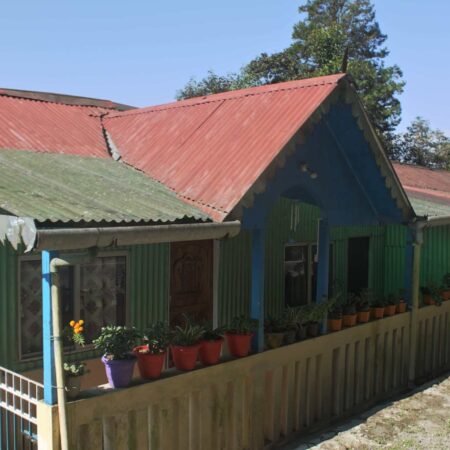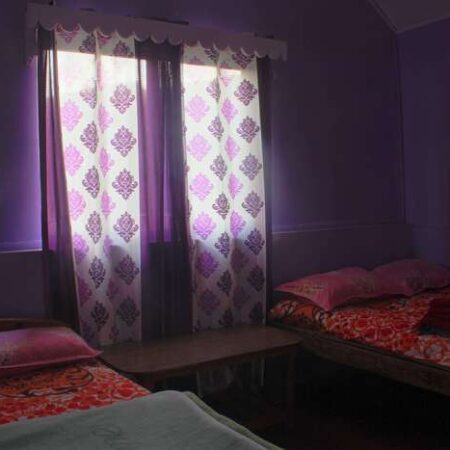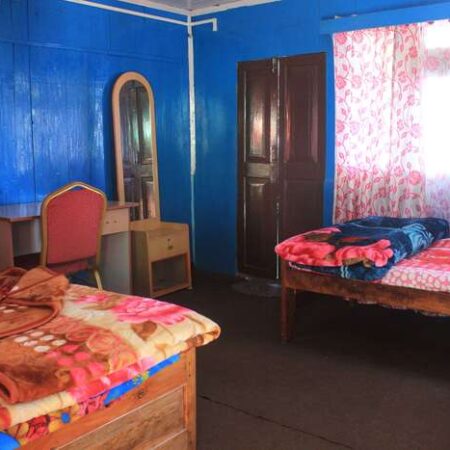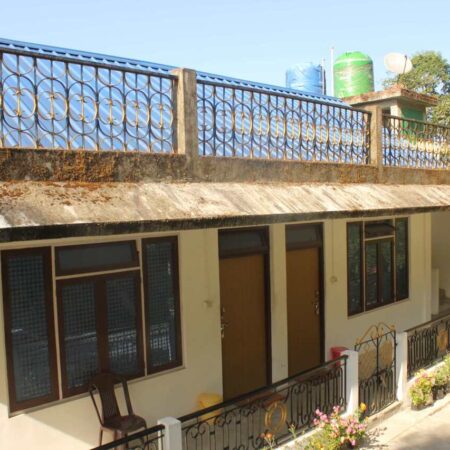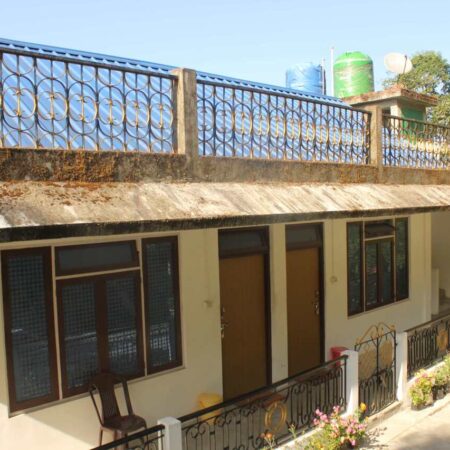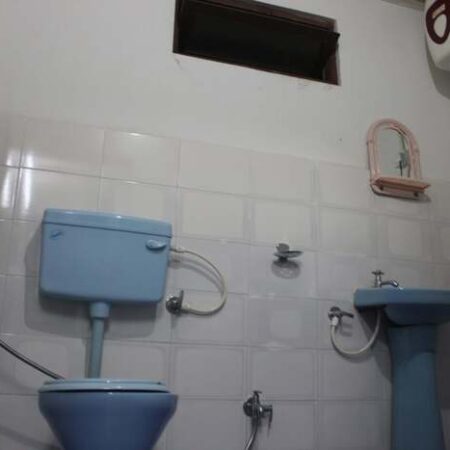Jaldapara Homestay
The Property
In the Dooars region, we have a large number of connected assets. All of our affiliated homes are nestled in the Dooars’ lush greenery and tea gardens. We have resorts near the Jaldapara National Park in Madarihat and the nearby districts. From the Resorts, you can see the never-ending green forest and glimpses of birds.
Our hotels provide luxurious accommodations amid nature. Both air conditioning and non-air conditioning are available here. Cottages/rooms with double, triple, and four beds, as well as associated balconies, are available. All of the properties are immaculately kept and well-kept. All of the apartments and cottages are surrounded by lush, well-kept gardens with a hint of wildness. There are open areas/gardens and parking places available.
All of the resorts have their own kitchen/restaurant and provide delicious cuisine.
Attractions:
The most strenuous and entertaining parts of a trip to Jaldapara are elephant and Jeep safaris. In the forest, there are watchtowers from which tourists may see the area’s wildlife. Jaldapara and Harindanga are two watchtowers that may be visited on a Jeep safari. During an elephant safari, guests may go deep into the forest, increasing their chances of seeing a variety of creatures and birds up close. Tourists notably enjoy elephant rides and Jeep safaris in the Jaldapara forest in pursuit of wild creatures, particularly one-horned rhinos. Jaldapara National Park is well-known in the Central Dooars. The uncommon one-horned rhinoceros, big bison, leopard, spotted deer, sambar, hog deer, snakes, huge wild tuskers, wild boars, and the rarest diversity of birds, including peacocks, call Jaldapara Wildlife Sanctuary home
Other sites of interest in the area are Jayanti (30 km from Alipurduar), which is a lovely setting. From Jaldapara or Madarihat, tourists may visit Chilapata Forest and Khayerbari Leopard Rescue Centre, Buxa fort, Jayanti, Totopara, and Phuentsholling.
How to reach Jaldapara
The nearest airport to Jaldapara is Bagdogra, from which tourists may travel to Jaldapara through Siliguri. NJP Railway Station is the most major railway station in North East India. All main Indian stations are directly connected to NJP. Madarihat is the closest railway station to Jaldapara. Birpara/Hasimara railway stations, which are well connected to Jaldapara, are where all mail and express trains stop.
Jaldapara is accessible by automobile and is connected to Siliguri through the National Highway. The sanctuary’s entrance is at Madarihat. It is situated on NH 31. (Siliguri-Hasimara section). From Siliguri to Alipurduar through Madarihat, buses operated by the North Bengal State Transport Corporation, Bhutan Government buses, and minibuses are available. To go to Jaldapara, you may hire a car in Siliguri.
About Jaldapara
If you want a good vacation from the everyday world while being surrounded by animals in a deep mystical forest, Jaldapara is the place to go.
The river Torsha flows through this rain forest sanctuary, which covers an area of 141 square kilometres and rises to a height of 61 metres. Jaldapara, a wide grassland with areas of riverine woodland, was designated as a sanctuary in 1941 to safeguard a diverse range of flora and animals, notably the one-horned rhinoceros, which is endangered. Woodlands, meadows, perennial streams, sandy riverbanks, and huge belts of tall grass make up the 216-square-kilometre Jaldapara Sanctuary. Mixed deciduous woods, meadows, and riverbanks are among the plants and species found here. The Malangi River, which runs from east to west, is also close by. The Sanctuary, which is drained by the rivers Torsa, Malangi, Hollong, Chirakhawa, Kalijhora, Sissamara, Bhaluka, and Buri Torsa, provides extensive grassland that acts as the last refuge for many mammals, amphibians and reptiles.
Aside from wild creatures, Jaldapara is a birdwatcher’s dream. There are around 240 bird species to be seen here, and it is one of the few spots in India where the Bengal florican can be seen. The Black Partridge, Shaheen Falcon, Great Pied Hornbills, Forest Eagle Owl, Large Green billed Malkoha White Rumped Vulture, and Lesser Adjutant Stork are among the Sanctuary’s endangered bird species.


